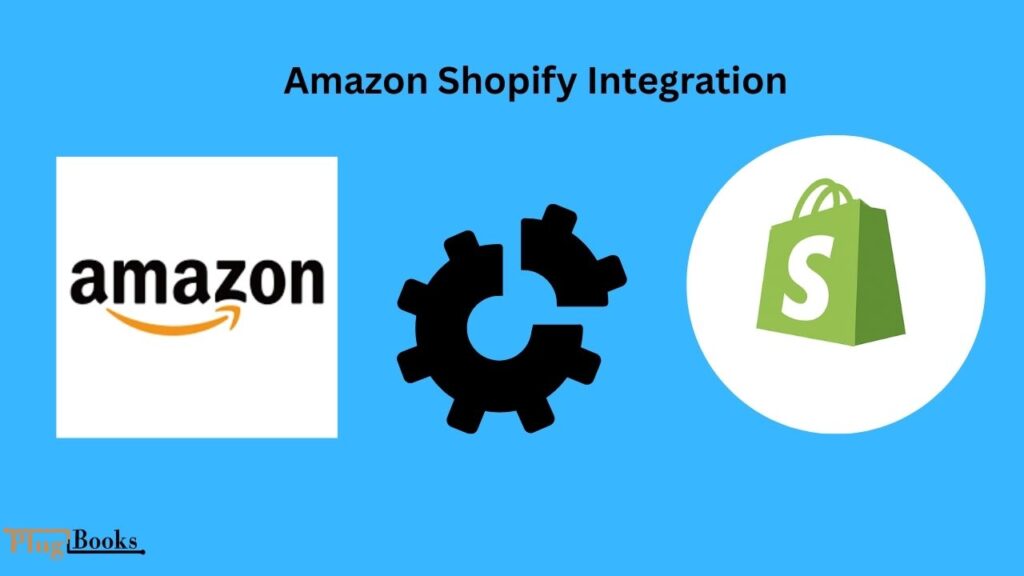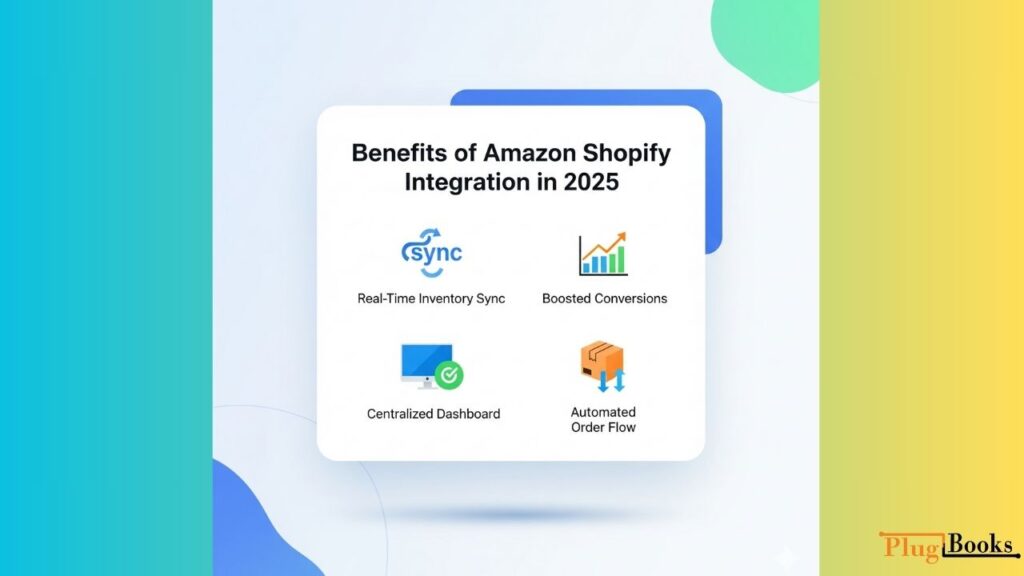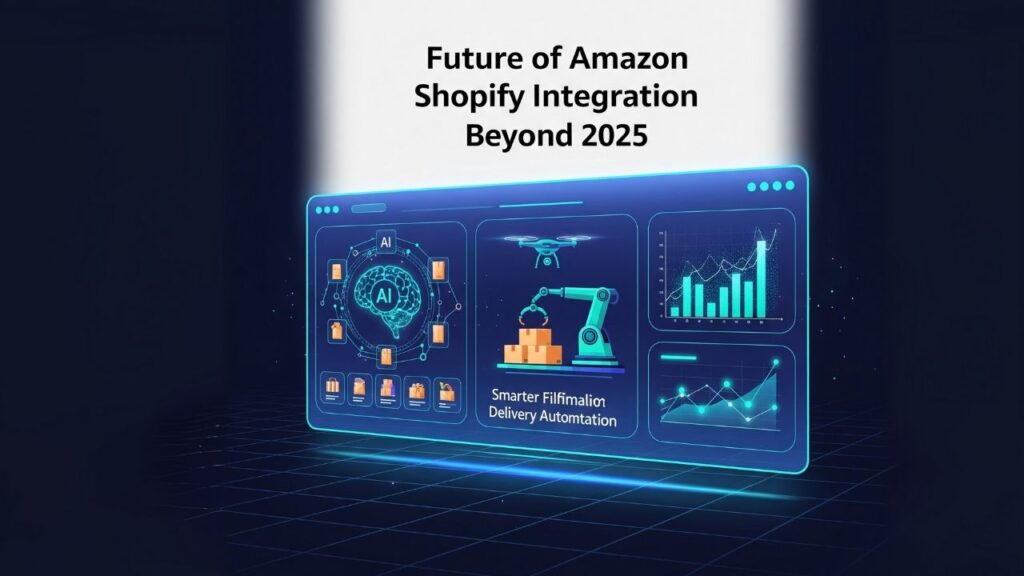Selling online isn’t about choosing between platforms anymore—it’s about being everywhere your customers are. And in 2025, the combination of Amazon Shopify integration has become one of the smartest ways to scale your eCommerce business.
Amazon brings a massive built-in audience, while Shopify gives you full control of your online store. But when these two platforms connect, that’s when real growth begins. Still, managing sales, fees, and payouts across both can get complicated fast. That’s where PlugBooks steps in to keep everything simple and automated.
Key Takeaways:
- Multi-channel selling is essential in 2025.
- Amazon Shopify integration gives sellers wider reach.
- Inventory and product mapping make selling smoother.
- Challenges like duplicate listings and fees need attention.
- PlugBooks makes financial management stress-free.
What is Amazon Shopify Integration in 2025?
The main thing that Amazon Shopify integration does is allow sellers link their Amazon Seller Central account to their Shopify site. This implies that products, orders, and stock are all automatically in sync. Here’s a complete guide on how to connect Shopify to Amazon.
Changes introduced in 2025 have made this procedure smoother, with increased automation and support for more regions. Sellers now get real-time updates on inventory and fulfillment, which cuts down on mistakes and makes purchasing better.

Why Sellers Need Amazon Shopify Integration
It’s not only a trend to sell across many channels; it’s a must. Sellers can:
- Reach a considerably broader audience by connecting Shopify to Amazon.
- Instead than switching dashboards, manage your inventory in one spot.
- Offer your stuff on both trusted platforms to get more sales.
- Make daily tasks easier.
In short, the answer to the question “Can you connect Amazon and Shopify?” is absolutely, and it’s easier than ever in 2025.
How Does Amazon Shopify Integration Work?
Here’s a simple breakdown:
- Connect Accounts – Link your Amazon Seller Central with Shopify.
- Sync Products – Import existing products or create new ones.
- Manage Inventory – Adjust stock and pricing directly from Shopify.
- Centralized Orders – Amazon orders appear inside your Shopify dashboard.
- Fulfillment Updates – Tracking and shipping sync automatically.
This answers the common question, “How does Shopify integrate with Amazon?” — the process is straightforward, but getting it right is key to avoiding overselling or mismatched listings.
Benefits of Amazon Shopify Integration in 2025
- Real-Time Inventory Sync: Avoid overselling when products move fast.
- Boosted Conversions: More sales channels = more opportunities.
- Centralized Dashboard: Manage two platforms in one place.
- Automated Order Flow: Less manual work, faster fulfillment.
With proper Shopify Amazon integration, sellers enjoy both reach and efficiency.

Common Challenges with Integration
The integration is strong, but not perfect:
- Customers may become confused by duplicate product listings.
- If your inventory doesn’t match, you might sell too much.
- The fees for Amazon and Shopify are different, which makes payouts harder.
- It can be hard to keep track of taxes and books on two platforms.
This is why sellers need more than simply integration; they also need automation that takes care of the money side of things. For example, tools like Shopify 1099 Guide help automate tax reporting and make managing payouts much easier.
A Seller’s Experience with Amazon Shopify Integration
Meet Maya, a small business owner who sells eco-friendly home goods. She started on Shopify in 2022 and later added Amazon to grow her sales.
At first, the Shopify Amazon integration looked like a dream—her products reached more people, and orders came in fast. But soon, she faced new headaches:
- Inventory wasn’t syncing properly, leading to overselling.
- Amazon fees didn’t match up with her Shopify payouts.
- Tax time turned into hours of spreadsheet chaos.
In 2024, Maya switched to PlugBooks. Suddenly, things changed. Her orders from both Amazon and Shopify started syncing automatically into QuickBooks. Refunds, fees, and payouts matched perfectly. By tax season, she had accurate reports ready in a few clicks.
Now in 2025, Maya says: “The integration helps me sell more, but PlugBooks helps me sleep better. I finally trust my numbers.”

How PlugBooks Makes Integration Seamless
Here’s where PlugBooks adds the missing piece to Shopify to Amazon integration:
- Automatic Sync: Orders, fees, and refunds flow into QuickBooks or Xero.
- Multi-Channel Dashboard: See Amazon, Shopify, and eBay sales in one place.
- Accurate Reconciliation: No more mismatched payouts or manual errors.
- Tax-Ready Reports: Generate compliance-ready reports in seconds.
- Time Savings: Focus on growth, not spreadsheets.
So while Shopify Amazon integration handles the sales side, PlugBooks ensures your financials stay clean, accurate, and stress-free. Ready to get started? Create your PlugBooks account here and streamline your finances in minutes.
Future of Amazon Shopify Integration Beyond 2025
Looking ahead, we’ll see:
- AI-driven product recommendations.
- Smarter fulfillment and delivery automation.
- Deeper financial insights, where PlugBooks will play a huge role.

FAQs
1. Can you integrate Amazon with Shopify in 2025?
Yes, the process is straightforward with Shopify’s built-in Amazon integration tools.
2. How does Shopify integrate with Amazon for inventory?
Inventory updates in real-time to prevent overselling.
3. Is there a cost for Amazon Shopify integration?
The integration itself is free, but Amazon and Shopify fees still apply.
4. How does PlugBooks help with this integration?
It syncs all financial data from Amazon and Shopify into QuickBooks or Xero automatically.
5. What’s the main benefit of Shopify to Amazon integration?
It saves time by letting you manage both platforms from one dashboard.
6. Do I still need bookkeeping software if I integrate?
Yes, because fees, payouts, and taxes require accurate accounting—PlugBooks automates this.

In conclusion
In 2025, Amazon and Shopify will work together to sell things online. It helps you reach more people, makes your business run more smoothly, and gives your customers a better experience. But just integrating isn’t enough; you also need to be clear about your finances.
That’s where PlugBooks comes in. It gets rid of mistakes in manual bookkeeping, makes payouts easier, and gets you ready for tax season without stress by automatically integrating your Amazon and Shopify data with QuickBooks or Xero.



